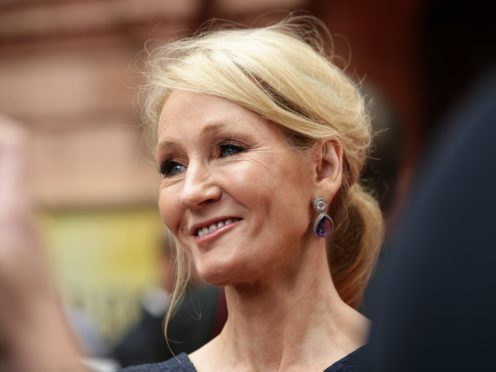JK Rowling has said she was partly motivated to speak out about transgender issues because of her experience of domestic abuse and sexual assault.
The Harry Potter author, 54, responded to criticism surrounding her comments in a lengthy blog post on her website.
In the post, she detailed five reasons she felt the need to talk about the issue – including her interest in “both education and safeguarding” and “freedom of speech”.
Explaining her final reason, she wrote: “I’ve been in the public eye now for over 20 years and have never talked publicly about being a domestic abuse and sexual assault survivor.
“This isn’t because I’m ashamed those things happened to me, but because they’re traumatic to revisit and remember.
“I also feel protective of my daughter from my first marriage. I didn’t want to claim sole ownership of a story that belongs to her, too.
“However, a short while ago, I asked her how she’d feel if I were publicly honest about that part of my life and she encouraged me to go ahead.
“I’m mentioning these things now not in an attempt to garner sympathy, but out of solidarity with the huge numbers of women who have histories like mine, who’ve been slurred as bigots for having concerns around single-sex spaces.”
Daniel Radcliffe, the star of the Harry Potter film series, and Eddie Redmayne, who leads the cast of Fantastic Beasts, have both criticised Rowling for her comments about transgender issues.
TERF warshttps://t.co/mc58tGXOjs
— J.K. Rowling (@jk_rowling) June 10, 2020
Last weekend, Rowling took issue with a headline on an online article discussing “people who menstruate”, and said: “I’m sure there used to be a word for those people. Someone help me out. Wumben? Wimpund? Woomud?”
And in December last year she voiced her support for a researcher who was sacked after tweeting that transgender people cannot change their biological sex.
Critics accused her of being transphobic, an allegation Rowling strongly denies.
In the blog post, Rowling also said she was motivated to address transgender issues via her Twitter account because of what she sees as an increasingly misogynistic society.
“We’re living through the most misogynistic period I’ve experienced,” she continued.
“Back in the 80s, I imagined that my future daughters, should I have any, would have it far better than I ever did, but between the backlash against feminism and a porn-saturated online culture, I believe things have got significantly worse for girls.
“Never have I seen women denigrated and dehumanised to the extent they are now.
“From the leader of the free world’s long history of sexual assault accusations and his proud boast of ‘grabbing them by the pussy’, to the incel (‘involuntarily celibate’) movement that rages against women who won’t give them sex, to the trans activists who declare that TERFs need punching and re-educating, men across the political spectrum seem to agree: women are asking for trouble.
“Everywhere, women are being told to shut up and sit down, or else.”
Rowling said she had felt “mentally sexless” as a girl growing up in Gloucestershire, which had prompted her to develop mental health issues.
She wrote: “When I read about the theory of gender identity, I remember how mentally sexless I felt in youth.”
Rowling said she had been influenced by Colette and Simone de Beauvoir’s views of gender during this period.
She added: “As I didn’t have a realistic possibility of becoming a man back in the 1980s, it had to be books and music that got me through both my mental health issues and the sexualised scrutiny and judgment that sets so many girls to war against their bodies in their teens.
“Fortunately for me, I found my own sense of otherness, and my ambivalence about being a woman, reflected in the work of female writers and musicians who reassured me that, in spite of everything a sexist world tries to throw at the female-bodied, it’s fine not to feel pink, frilly and compliant inside your own head; it’s OK to feel confused, dark, both sexual and non-sexual, unsure of what or who you are.”
